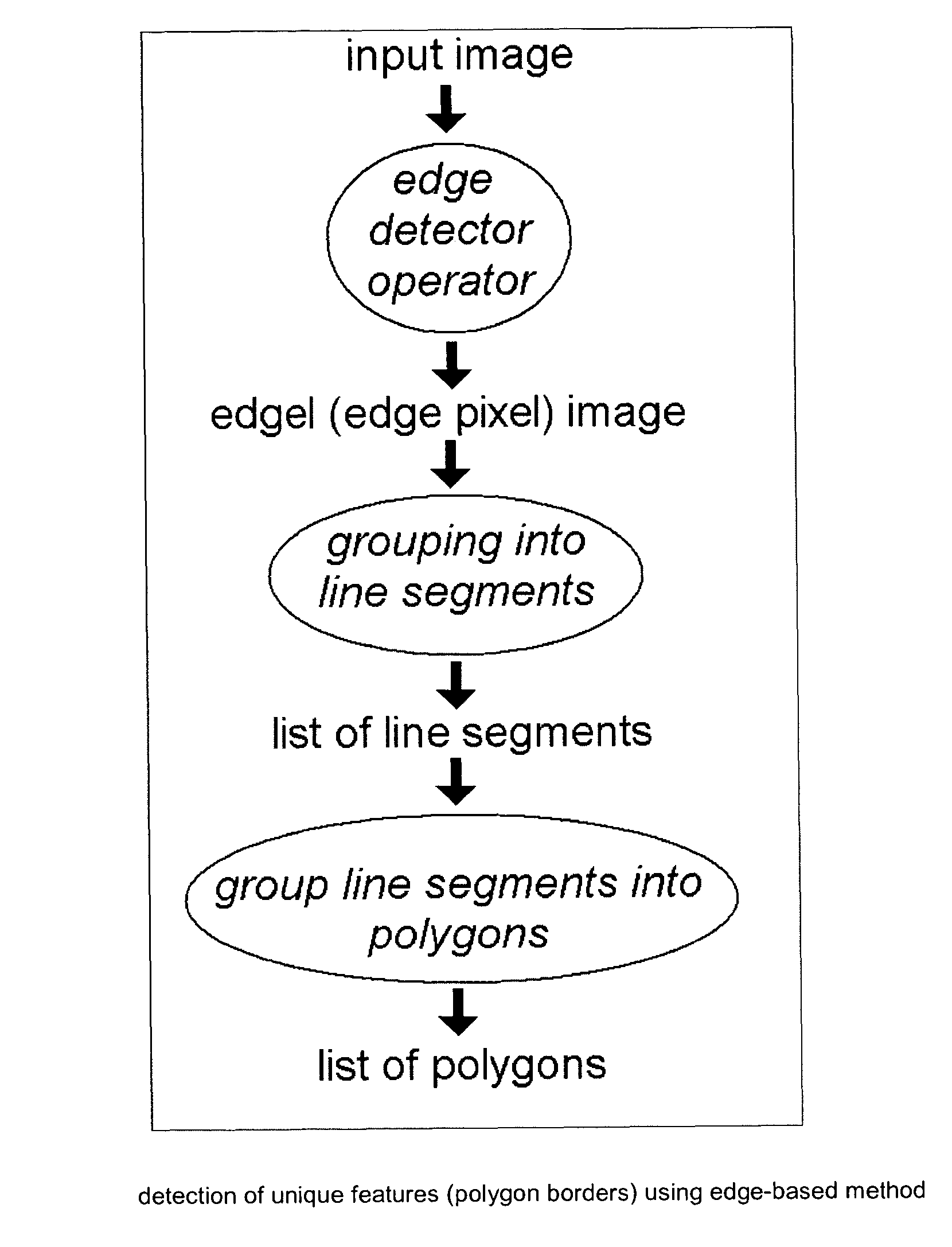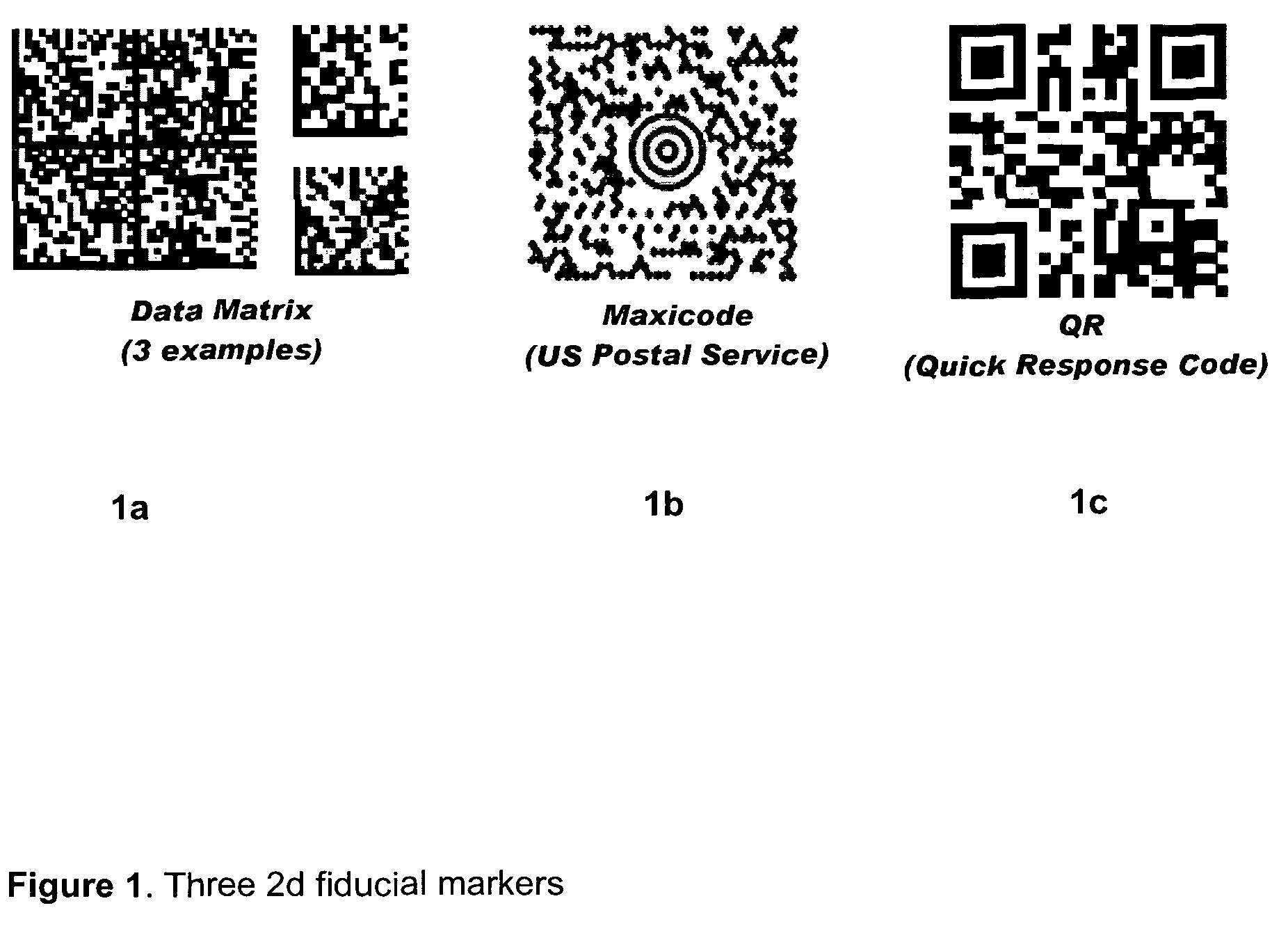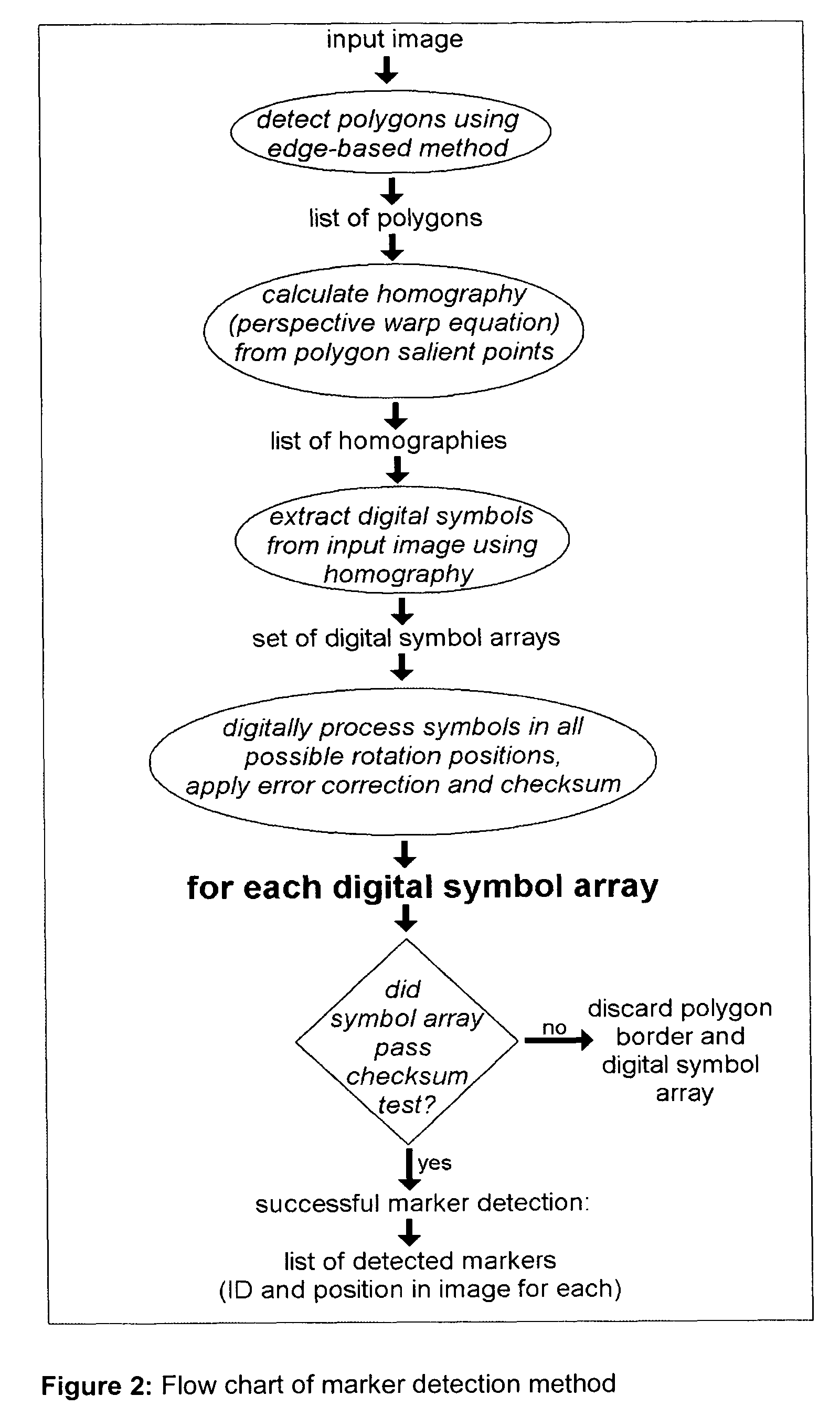Marker and method for detecting said marker
a technology of visual markers and markers, applied in the field of visual markers and methods of detecting visual markers, can solve the problems of not always very effective, existing fiducial marker systems such as artoolkit, artoolkit plus, binary square markers, etc., and achieve the effect of more robustness
- Summary
- Abstract
- Description
- Claims
- Application Information
AI Technical Summary
Benefits of technology
Problems solved by technology
Method used
Image
Examples
Embodiment Construction
[0043]Other advantages that are inherent to the structure are obvious to one skilled in the art. The embodiments are described herein illustratively and are not meant to limit the scope of the invention as claimed. Variations of the foregoing embodiments will be evident to a person of ordinary skill and are intended by the inventor to be encompassed by the following claims.
[0044]This application describes a “fiducial marker system” using digital patterns designed to satisfy the requirements stated in the background section. It includes the simultaneous application of an edge-based method to find polygon borders and the use of single or multi level of data including both checksums and error correction in the digital pattern component of the marker. The edge-based approach for polygon border detection provides more robust detection of markers in situations of uncontrolled lighting and partial occlusion. The dual level marker allows for additional information to be stored, including li...
PUM
 Login to View More
Login to View More Abstract
Description
Claims
Application Information
 Login to View More
Login to View More - R&D
- Intellectual Property
- Life Sciences
- Materials
- Tech Scout
- Unparalleled Data Quality
- Higher Quality Content
- 60% Fewer Hallucinations
Browse by: Latest US Patents, China's latest patents, Technical Efficacy Thesaurus, Application Domain, Technology Topic, Popular Technical Reports.
© 2025 PatSnap. All rights reserved.Legal|Privacy policy|Modern Slavery Act Transparency Statement|Sitemap|About US| Contact US: help@patsnap.com



